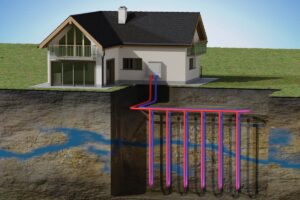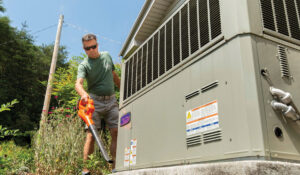Heating and cooling account for about half the energy used in a typical home, so it’s a great place to use less energy. When used wisely, your thermostat can help reduce wasted energy. Here’s information on thermostat types, common operational misconceptions and best practices you can start today.
Types of thermostats
Mechanical thermostats are easy to control by adjusting a dial or sliding switch. The downfall is you must make temperature adjustments manually, which is easy to forget. They are inefficient because they typically heat or cool the home beyond the set point.
If your cooling is set to 72 degrees, a mechanical thermostat may actually cool your home to 70 degrees before it turns off, wasting
energy. Then it might not come on again until the home reaches 74 degrees. That 4-degree temperature change is noticeable and can lead people to adjust the thermostat setting down even more, which wastes more energy.
Also, some mechanical thermostats contain mercury. You can determine that by removing the front plate and looking for small glass bulbs. If your thermostat contains mercury, replace it and find a way to properly recycle it.
Digital thermostats are more accurate, efficient and some are programmable, which is a great option for people who don’t have internet or don’t want their thermostat data tracked.
Smart thermostats (which require an internet connection) are Wi-Fi-enabled and can be controlled using a smartphone app. Programming is easier, and you can track and manage use and temperature data. However, that data is shared with the manufacturer.
Smart thermostats can learn your preferences and set a schedule that automatically adjusts the temperature. Some have geofencing, which adjusts the temperature based on the distance your smartphone is from home.
Misconceptions about thermostats
A common misconception is the higher you turn your thermostat up or down, the faster your home’s temperature will change. Turning your thermostat down to 55 degrees to cool your home faster is like repeatedly pushing the elevator button and expecting it to come faster.
It’s likely you will forget you adjusted it and waste energy by over heating or cooling the home. Set your desired temperature for heating and cooling or program your thermostat so you don’t make extreme adjustments.
Many people believe it takes more energy to heat or cool a house instead of leaving it the same temperature. The larger the temperature variance between inside and outside, the more energy your system uses. Setting your thermostat 7 to 10 degrees from its normal setting for eight hours a day can save up to 10 percent a year on your energy bill, according to the U.S. Department of Energy (DOE).
Best practices
Use these heating and cooling tips from the DOE to add efficiency and savings to your home:
- Set it to 78 degrees in the summer when you are home and awake, and warmer at night or when away. Set your thermostat to 68 degrees in the winter when you are home and awake, and cooler at night or when you are away.
- Upgrade to a programmable or smart thermostat that automatically adjusts the temperature throughout the day and when you leave the house.
- When on vacation, set your thermostat to 85 degrees in the summer and 55 degrees in the winter.
- In the summer, fans allow you to set your thermostat about 4 degrees warmer without feeling it. Remember, fans cool people not rooms, so turn them off when you leave a room.
Use your thermostat to optimize energy efficiency and find a balance between comfort and affordability.










